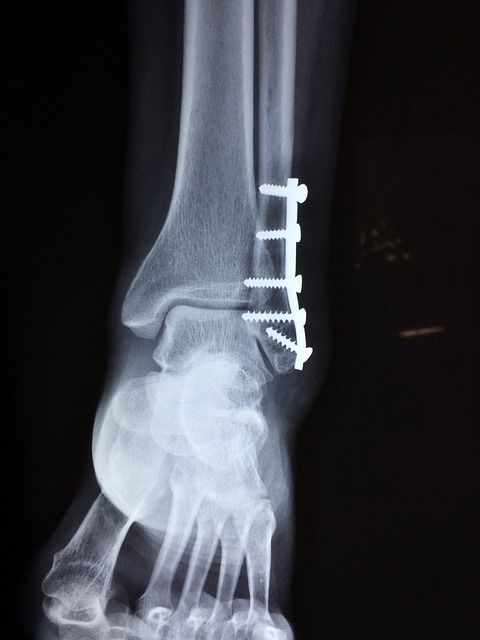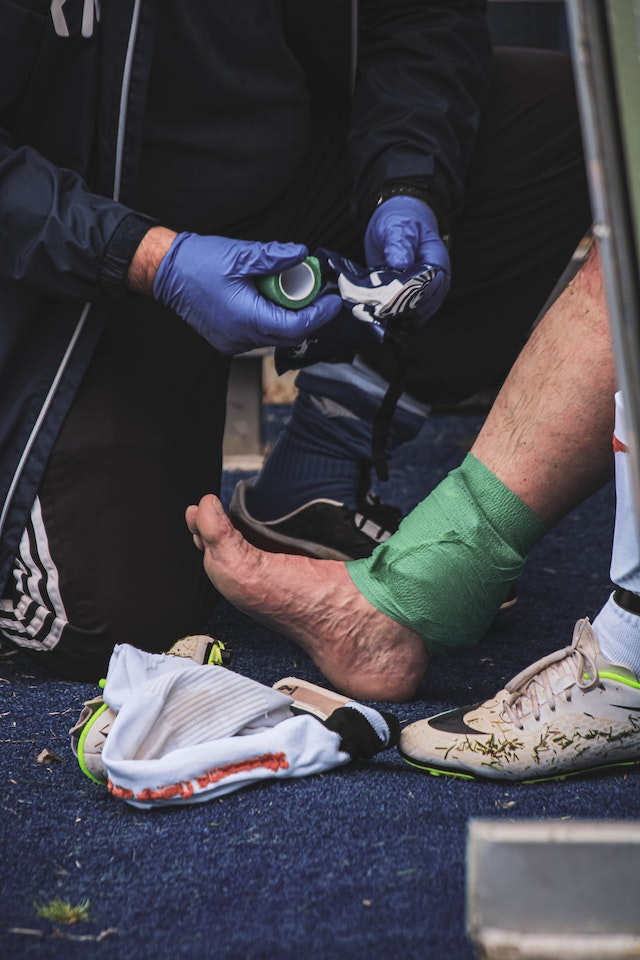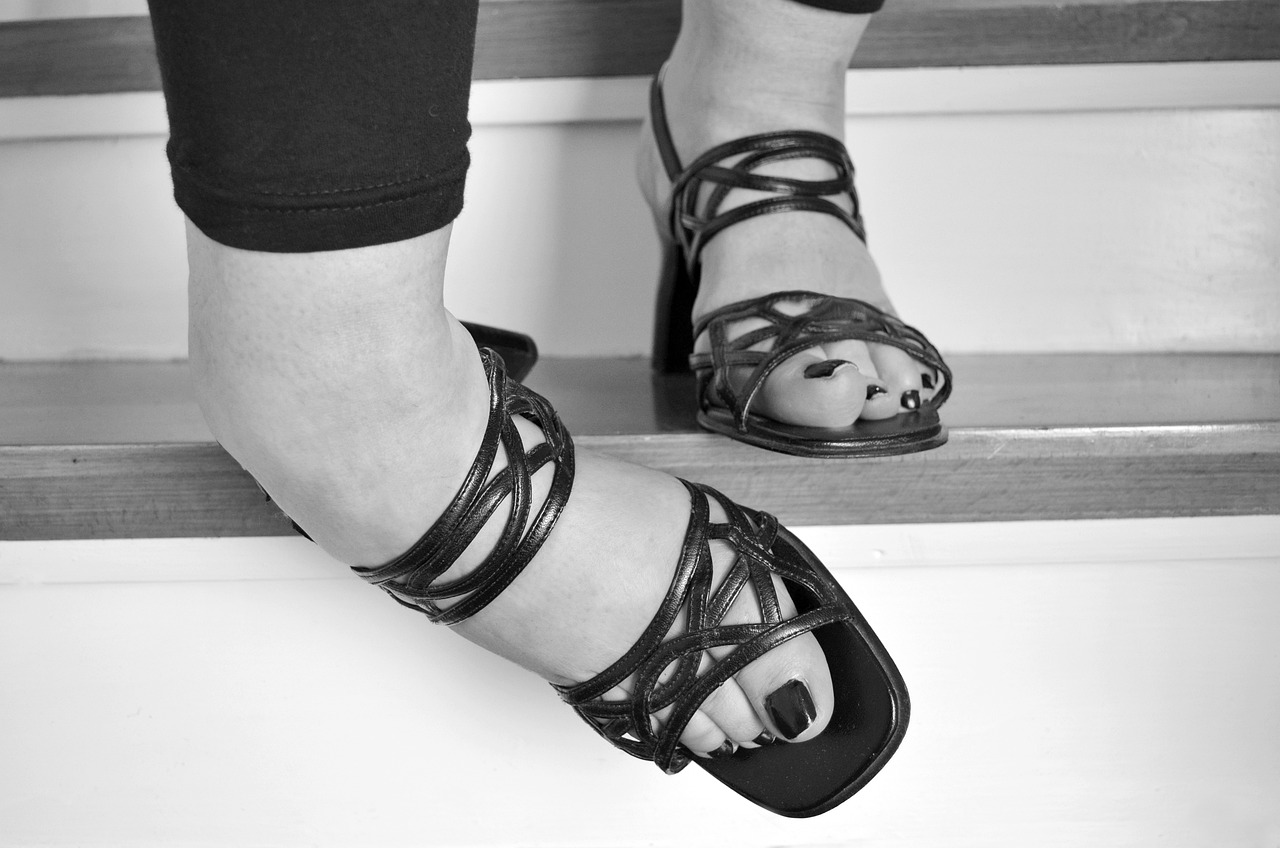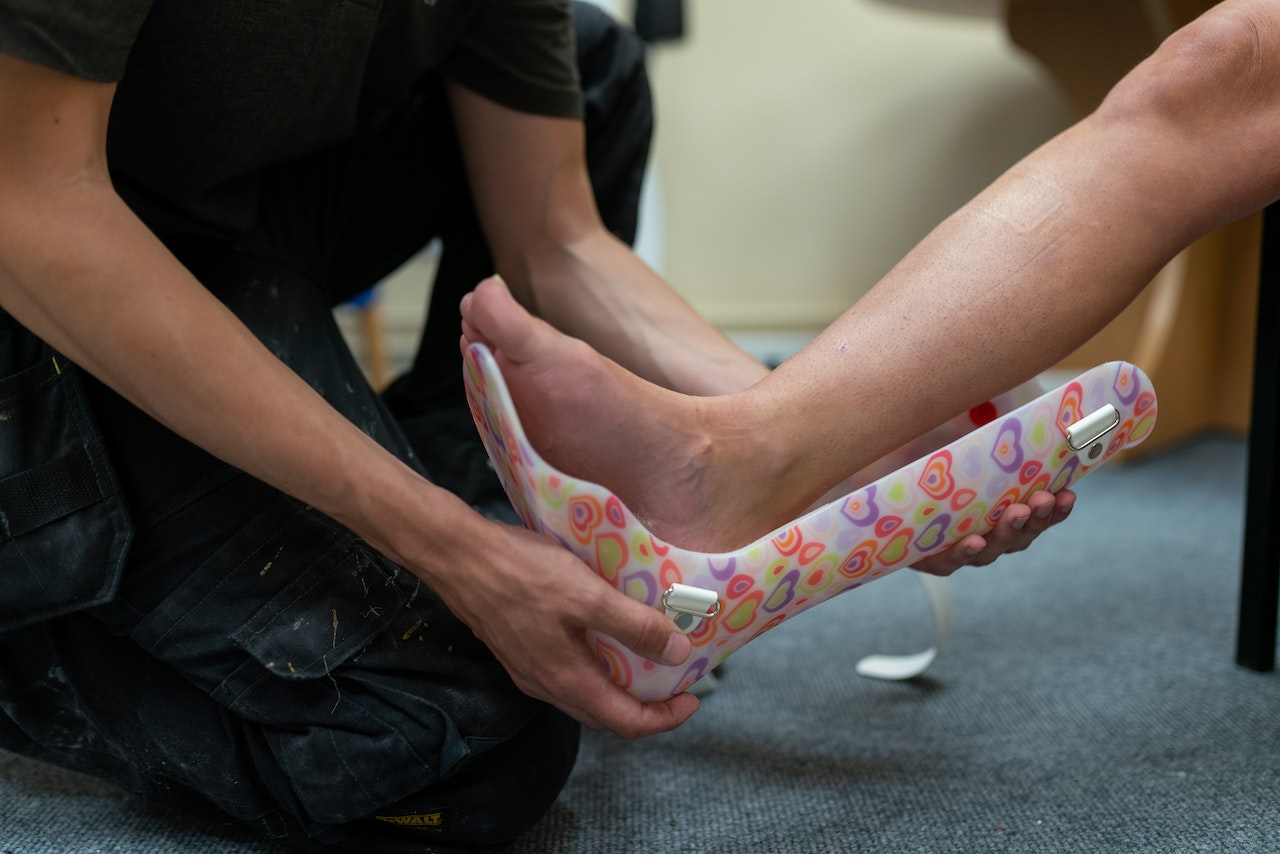Seek medical attention immediately if you can’t take 4 steps or bear weight on the ankle. An x-ray may be ordered to see if you have a broken bone in your lower leg or foot. See a doctor if the sprained ankle you’re managing yourself has not healed after a day or so.
If you are concerned about a severe sprain on the ankle, we prepared some pointers to help you out. Here, we’ll discuss the common symptoms, diagnoses, causes, home remedies and when to seek medical attention.
What is an Ankle Sprain?
The talus, tibia and fibula are three ankle bones that stabilise an ankle joint. They are held together by ligaments, which are strong and stretchy bands of tissue. Whilst ankle ligaments stabilise the bones in your foot and ankle, too much or sudden movement can lead to a sprain.
Most ankle sprains happen when you play sports. Perhaps you jumped to catch a ball but came down too hard, or you twisted your foot after stepping into a hole.
What are the Symptoms of a Sprained Ankle?

Most of the time, you will feel ankle pain right after the ligaments are torn or damaged. Other sprained ankle symptoms often include:
- Mild to moderate pain when moving the foot
- Swelling
- Itching
- Numb feet
- Stiffness
- Tenderness to touch
- Ankle instability
You may experience a tearing sensation when the sprain is severe. Also, a pop or snap sound is heard as the injury happens.
After the injury, you may also notice:
- Extreme pain
- Bruising
- Inability to bear weight on the foot
Generally, severe ankle sprains are characterised by increased pain and swelling. The more serious the sprain is the longer it takes to heal.
What are the Causes of Ankle Sprain?

A sprained ankle is an injury that can cause extreme pain and disrupt your ankle’s range of motion. This injury often happens when you’re playing sports or doing everyday activities that overstretch the ankle ligaments. These ligaments may be partially torn, or they may be damaged completely.
Physical Activities
Basketball, volleyball and soccer are sports that involve a lot of jumping. Thus, the chances of stepping on another player’s foot are high. Exercising or even walking on an uneven surface can also cause ankle sprains.
Weak Ankles
If you have weak ankles, you can easily sprain them when taking a walk on the beach, or stepping off of a curb the wrong way. Moreover, you are more likely to have a sprained ankle if you had one before. Previous ankle sprains cause scarring and looseness of the ligaments.
Genetics
Some diseases that run in the family like “hindfoot varus” can also make you prone to ankle sprains. People with this condition naturally turn their heels inward, which puts a strain on the ankle ligaments.
When to See a Doctor

Ankle sprains are common injuries in physical activities like sports. Home remedies may be all you need. However, you should call your doctor when the following symptoms are severe such as:
- Persistent pain even after performing self-care measures
- Pain, swelling and bruising are getting worse
- Continued foot and ankle instability
- Signs of an infection such as warmth, tenderness and redness in the injured area
- A fever of over 38 degrees C
Diagnosing a Sprained Ankle
If you’re worried about a severe ankle sprain, don’t try to diagnose it yourself. Rather, schedule a consultation with a doctor or a foot and ankle specialist. The doctor will examine your foot and ankle. They will also check your lower leg as well as your knee for other injuries.
The doctor will ask about the cause of the injury to help find out if you had an ankle fracture. Doctors may order imaging tests (x-ray or MRI scans) to see if the injury is only a sprain.
Treatment for a sprained ankle depends on how serious the injury is. Sprained ankles are graded according to the severity of the injury.
Sprained Ankle Treatment and Prevention

Mild to moderate ankle sprains can be treated at home with the Rest, Ice, Compression and Elevation (RICE) method.
Rest
Taking a rest may be all you need if you sprained your ankle. Avoid putting weight on your foot and ankle. Wait for the injury to heal properly before participating in sports and even normal activities.
Ice
Apply ice on the injured area for 15 to 20 minutes, 3 times a day.
Compression
Wrap your ankle with compression or elastic bandage to help put pressure on the ankle and control the swelling. You can also use compression braces or socks.
Elevation
Elevate or raise your injured foot above your heart level to promote good circulation. Good blood flow helps keep the swelling down.
Other Sprained Ankle Treatment Methods

- Over-the-counter medications such as ibuprofen and naproxen sodium can help reduce ankle pain.
- A cast or splint can help keep the injured ankle from moving.
- Physical therapy can help bring back your ankle’s full range of motion.
- In cases where medical treatment did not help improve the condition, surgery may be required to repair damaged ligaments.
Prevention

Sports participation, walking on uneven surfaces, previous ankle injury, weak ankle tendons and muscles, and improper shoes are factors that increase the risk of a sprained ankle. Here are tips to prevent a sprained ankle or a recurring injury:
- Be sure you are properly fit to perform any physical activity. Make sure your muscles are strong and flexible enough when participating in sports.
- Do some stretching and warm-up exercises before any physical activity or sports. Do some balance exercises and stability training.
- Provide support for the weak or previously injured ankle using a brace or tape.
- Wear proper footwear for a specific activity. Minimise wearing high heels and ill-fitting footwear.
Concerned About a Sprained Ankle? Contact Adelaide Foot and Ankle
It’s normal to get a sprained ankle, especially when you play sports. Mild sprains can be treated at home but you shouldn’t take them lightly. Make sure to have your injury checked by a doctor or a foot and ankle specialist.
The trusted and friendly team of foot care specialists at Adelaide Foot and Ankle are on a mission to get you back in action. Contact us so we can assess your foot and ankle and offer sprained ankle treatment options that will help you get active again.
FAQs
1. How do I know if my ankle sprain is serious?
If you have a severe ankle sprain, you may notice bruising, you can’t move the joint and put weight on the foot. This is due to the extreme pain and swelling of the torn ankle ligaments. The more pain and swelling on the injured ankle, the more serious it is and the longer for it to heal.
2. How long should you wait to see a doctor for a sprained ankle?
You should see a doctor if 2-5 days of sprained ankle treatment at home did not help improve the persistent pain and swelling. See a doctor immediately if you can’t put weight on the foot, the pain worsens, or you experience extreme pain and swelling after an ankle injury.
3. Should a sprained ankle hurt all the time?
Ankle sprains may result in damage to the structures around or the surface of the ankle joint. Consequently, this will lead to chronic pain and swelling that does not improve despite self-care treatment and rest.
4. What are three 3 signs that someone may have a sprained ankle?
The 3 signs of a sprained ankle are soreness, swelling and bruising. Ankle injuries are classified according to the severity of the injury.
Reference
https://www.betterhealth.vic.gov.au/health/conditionsandtreatments/ankle-sprains
https://www.mayoclinic.org/diseases-conditions/sprained-ankle/symptoms-causes/syc-20353225





